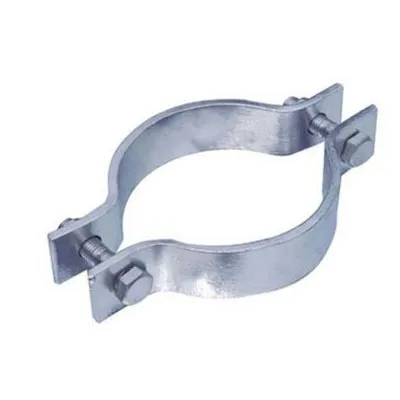The Importance of Electric Power Fittings in Modern Electrical Systems
2024-10-09
In the realm of electrical power distribution, Electric Power Fittings are critical components that ensure the safe, stable, and efficient transmission of electricity from power plants to consumers. These fittings, often overlooked, serve as the backbone of electrical infrastructure, making them essential for the proper functioning of power lines, substations, transformers, and other equipment. As the demand for energy increases and renewable energy sources become more prominent, the role of electric power fittings has become even more vital in ensuring the reliability and sustainability of power systems.
In this blog, we’ll explore what electric power fittings are, their different types, applications, and their importance in today’s electrical networks.
What Are Electric Power Fittings?
Electric Power Fittings refer to the hardware and accessories used in electrical power transmission and distribution systems. These components are typically made from durable materials such as steel, aluminum, or galvanized metals to withstand the rigors of high voltage, environmental factors, and mechanical stress.
The primary function of these fittings is to connect, support, or protect electrical conductors, insulators, and other equipment within the system. Without proper power fittings, electrical systems would be prone to faults, mechanical failure, and safety hazards.
Key Types of Electric Power Fittings
Electric power fittings come in various forms, each designed for a specific function within the power grid. Below are some of the most common types:
1. Suspension Clamps
- Description: Suspension clamps are used to attach electrical conductors to towers or poles. They provide mechanical support while allowing the conductors to move freely under varying loads due to wind or thermal expansion.
- Common Use: Transmission lines, utility poles, and substations.
- Advantage: They offer flexibility and help prevent mechanical stress on the conductors, which could lead to damage over time.
2. Tension Clamps (Dead-End Clamps)
- Description: Tension clamps, also known as dead-end clamps, are used to secure the ends of conductors, preventing them from moving under tension. These clamps are often found at the end of a line or where a change in direction occurs.
- Common Use: High-voltage transmission lines and distribution networks.
- Advantage: They provide a stable, secure hold, minimizing conductor sag and ensuring proper tension along the line.
3. Connectors and Splices
- Description: Connectors and splices join two sections of conductor or cable together, ensuring the smooth transmission of electricity. There are various types, including compression connectors, bolted connectors, and automatic splices.
- Common Use: Power lines, substations, and underground cables.
- Advantage: These components ensure minimal power loss and a secure connection between conductors, reducing the risk of faults.
4. Insulator Fittings
- Description: These fittings are used to attach insulators to poles or towers and secure conductors to the insulators. They help to isolate electrical components from each other and prevent leakage currents.
- Common Use: High-voltage transmission lines and substations.
- Advantage: Insulator fittings provide crucial electrical isolation, helping to prevent short circuits and ensuring the safety and efficiency of the system.
5. Grounding Fittings
- Description: Grounding fittings connect the power system to the ground, allowing fault currents to safely dissipate into the earth. These include ground rods, grounding clamps, and grounding plates.
- Common Use: Substations, transformers, and distribution systems.
- Advantage: Grounding fittings are essential for safety, protecting the system and personnel from electric shocks and lightning strikes.
6. Guy Wire Fittings
- Description: Guy wire fittings are used to anchor guy wires, which provide stability to poles and towers by balancing mechanical loads. These include guy grips, thimbles, and anchors.
- Common Use: Utility poles, communication towers, and transmission towers.
- Advantage: They enhance the structural integrity of towers and poles, reducing the risk of collapse under high winds or heavy loads.
7. Vibration Dampers
- Description: Vibration dampers are designed to reduce the mechanical vibrations caused by wind and other environmental factors on conductors. These vibrations can lead to fatigue and damage over time.
- Common Use: Transmission lines, particularly in windy regions.
- Advantage: Vibration dampers extend the lifespan of conductors by minimizing mechanical wear and tear.
8. Bus Bar Fittings
- Description: Bus bar fittings are used in substations to connect various components, such as transformers, circuit breakers, and isolators, to the bus bar, which distributes power.
- Common Use: Substations and industrial power systems.
- Advantage: They provide a reliable connection and ensure the efficient distribution of power within the substation.
Applications of Electric Power Fittings
1. Transmission and Distribution Lines
Electric power fittings are essential in high-voltage transmission lines that carry electricity over long distances from power plants to substations. They ensure that conductors are properly supported, secured, and insulated, allowing for safe and efficient power transmission.
2. Substations
Substations play a critical role in transforming voltage levels and distributing power to consumers. Power fittings are used to connect equipment within the substation, such as transformers, switches, and bus bars, ensuring the smooth flow of electricity between components.
3. Renewable Energy Systems
As the world shifts toward renewable energy sources, such as solar and wind power, electric power fittings are required to support the infrastructure for these systems. In solar farms, for example, fittings are used to connect and secure solar panels to the power grid. In wind farms, they ensure that power generated by turbines is safely transmitted to the grid.
4. Utility Poles and Towers
Utility poles and towers use electric power fittings to support conductors, protect insulators, and stabilize structures. From urban areas to remote rural regions, these fittings play a crucial role in delivering electricity to homes and businesses.
5. Underground Power Systems
In densely populated areas, underground power systems are used to avoid the visual impact and vulnerability of overhead lines. Special power fittings are required for underground cable joints, splices, and terminations to ensure safe and reliable connections.
Importance of Electric Power Fittings in Modern Power Systems
1. Safety
Electric power fittings play a critical role in ensuring the safety of electrical systems. Grounding fittings, insulators, and protective hardware minimize the risk of electrical accidents, including shocks, fires, and short circuits. Properly installed fittings ensure that electricity is transmitted safely and that any faults are effectively managed.
2. Efficiency
Efficient electrical transmission is essential to minimizing power loss. Connectors, splices, and bus bar fittings ensure that there is minimal resistance and power loss at connection points, optimizing the system’s overall performance. This translates into reduced energy wastage and cost savings for utility providers and consumers alike.
3. Reliability and Durability
Power fittings are designed to withstand harsh environmental conditions, including wind, rain, snow, and temperature extremes. Durable fittings ensure the long-term reliability of electrical systems, reducing the need for frequent maintenance and repairs. In critical infrastructure, such as hospitals, airports, and data centers, reliable power fittings are essential for preventing power outages and ensuring continuous operation.
4. Adaptability
As electrical systems evolve with the integration of smart grids, renewable energy, and new technologies, electric power fittings need to adapt. The industry is continuously innovating to develop new fittings that can handle the complexities of modern power networks, such as higher voltages, fluctuating loads, and decentralized power generation from renewable sources.
Conclusion
Electric Power Fittings are the unsung heroes of electrical infrastructure, ensuring that power is transmitted safely, efficiently, and reliably. From high-voltage transmission lines to underground power systems and renewable energy installations, these fittings play a vital role in connecting and securing the components that make up our modern electrical networks.
As the global demand for electricity grows and the shift toward renewable energy accelerates, the importance of high-quality power fittings cannot be overstated. Investing in reliable, durable, and efficient fittings is essential for building a sustainable and resilient power grid that can meet the challenges of the future.



